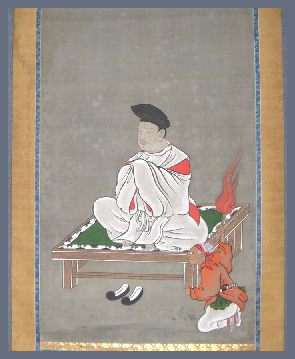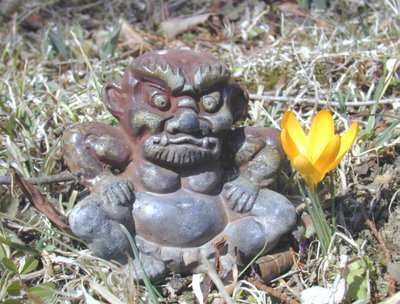https://edoflourishing.blogspot.jp/2015/12/fukiyacho-district.html
..............................................................................................................................................
Kayabacho 茅場町
Kayabacho is in the southern part of the Nihonbashi area.
In the Edo Period, reed fields abounded in the area. Many merchants selling roof thatch lived here.
Since Kayabacho is near the Tokyo Stock Exchange, it has become a business district with many stock brokerage firms. It is called one of the world's Big Three financial centers and Japan's Wall Street. The streets are filled with businessmen.Going to Nippon Budokan and Tokyo Disney Resort is also convenient.
There are many business hotels around the subway station.In 1887, Tokyo Dento Co., Japan's first electric power company, built Japan's first power plant in Kayabacho. It started supplying electricity to nearby customers such as Nippon Yusen Kaisha (NYK Line) and the Tokyo Post Office.Two branches of the Kamejima River flow through Kayabacho and empty into the Sumida River. The Kamejima River branches off from the Nihonbashi River.Upstream where the Kamejima River branches off, there is the Nihonbashi Sluice Gate. And downstream at the river mouth is the Kamejima River Sluice Gate. Both gates prevent flooding caused by high tide countercurrents.
- source : gurunavi.com/en -
Minami Kayabachoo 南茅場町 Minami Kayabacho, Minami-Kayabacho
Apart from the roof thatch dealers, soon more drinking places and restaurants were built there.

Kaikoan restaurant at Minami-Kayabacho
歌川広重 Utagawa Hiroshige
東都高名会席尽 茅場町 葛の葉 (Kuzunoha)
Kaiko-an, Minami-Kayabacho
:::::::::::::::::::::::::::::::::::::::::::::::::::::::::::::::::::::::::::::::::::::::::::::::::::::::::::::::::::::::::::::::::::::::::::::::::::::::::::::::::::::::::::::::::::::
- quote
Thatching is the craft of building a roof with dry vegetation such as straw, water reed, sedge (Cladium mariscus), rushes, or heather, layering the vegetation so as to shed water away from the inner roof. It is a very old roofing method and has been used in both tropical and temperate climates. Thatch is still employed by builders in developing countries, usually with low-cost, local vegetation. By contrast in some developed countries it is now the choice of affluent people who desire a rustic look for their home, would like a more ecologically friendly roof, or who have purchased an originally thatched abode.
A thatched roof
is usually pitched between 45–55 degrees and under normal circumstances this is sufficient to shed snow and water. In areas of extreme snowfall, such as parts of Japan, the pitch is increased further.
- source : wikipedia
- quote -
kayabuki yane 茅葺屋根. Lit. thatching with miscanthus.
However, the word kaya 茅 includes the use of many kinds of grasses, reeds and straw. Although thatched roofs are usually associated with vernacular dwellings minka 民家, some shrine or temple buildings or gates still use this type of roofing material. Thatch roofs last a maximum of about 30 years, before thatching becomes necessary. About half the thatch can be removed, dried out and reused.
... The shape and pitch of thatched roofs vary from region to region. The steepest roofs use the gasshou style gasshou-zukuri 合掌造 (gasshozukuri), to shed snow easily while in milder areas the pitch used is relatively gentle.
- Read the details here :
- source : JAANUS-
. WKD - kaya fuku 萱葺く thatching a roof .
kaya karu 萱刈る (かやかる) cutting miscanthus (reeds)
ashi kari 蘆刈 (あしかり) cutting reeds
kaya - Schilfgras
...
..............................................................................................................................................
Kayabacho 茅場町
Kayabacho is in the southern part of the Nihonbashi area.
In the Edo Period, reed fields abounded in the area. Many merchants selling roof thatch lived here.
Since Kayabacho is near the Tokyo Stock Exchange, it has become a business district with many stock brokerage firms. It is called one of the world's Big Three financial centers and Japan's Wall Street. The streets are filled with businessmen.Going to Nippon Budokan and Tokyo Disney Resort is also convenient.
There are many business hotels around the subway station.In 1887, Tokyo Dento Co., Japan's first electric power company, built Japan's first power plant in Kayabacho. It started supplying electricity to nearby customers such as Nippon Yusen Kaisha (NYK Line) and the Tokyo Post Office.Two branches of the Kamejima River flow through Kayabacho and empty into the Sumida River. The Kamejima River branches off from the Nihonbashi River.Upstream where the Kamejima River branches off, there is the Nihonbashi Sluice Gate. And downstream at the river mouth is the Kamejima River Sluice Gate. Both gates prevent flooding caused by high tide countercurrents.
- source : gurunavi.com/en -
Minami Kayabachoo 南茅場町 Minami Kayabacho, Minami-Kayabacho
Apart from the roof thatch dealers, soon more drinking places and restaurants were built there.

Kaikoan restaurant at Minami-Kayabacho
歌川広重 Utagawa Hiroshige
東都高名会席尽 茅場町 葛の葉 (Kuzunoha)
Kaiko-an, Minami-Kayabacho
:::::::::::::::::::::::::::::::::::::::::::::::::::::::::::::::::::::::::::::::::::::::::::::::::::::::::::::::::::::::::::::::::::::::::::::::::::::::::::::::::::::::::::::::::::::
- quote
Thatching is the craft of building a roof with dry vegetation such as straw, water reed, sedge (Cladium mariscus), rushes, or heather, layering the vegetation so as to shed water away from the inner roof. It is a very old roofing method and has been used in both tropical and temperate climates. Thatch is still employed by builders in developing countries, usually with low-cost, local vegetation. By contrast in some developed countries it is now the choice of affluent people who desire a rustic look for their home, would like a more ecologically friendly roof, or who have purchased an originally thatched abode.
A thatched roof
is usually pitched between 45–55 degrees and under normal circumstances this is sufficient to shed snow and water. In areas of extreme snowfall, such as parts of Japan, the pitch is increased further.
- source : wikipedia
- quote -
kayabuki yane 茅葺屋根. Lit. thatching with miscanthus.
However, the word kaya 茅 includes the use of many kinds of grasses, reeds and straw. Although thatched roofs are usually associated with vernacular dwellings minka 民家, some shrine or temple buildings or gates still use this type of roofing material. Thatch roofs last a maximum of about 30 years, before thatching becomes necessary. About half the thatch can be removed, dried out and reused.
... The shape and pitch of thatched roofs vary from region to region. The steepest roofs use the gasshou style gasshou-zukuri 合掌造 (gasshozukuri), to shed snow easily while in milder areas the pitch used is relatively gentle.
- Read the details here :
- source : JAANUS-
. WKD - kaya fuku 萱葺く thatching a roof .
kaya karu 萱刈る (かやかる) cutting miscanthus (reeds)
ashi kari 蘆刈 (あしかり) cutting reeds
kaya - Schilfgras
...


































